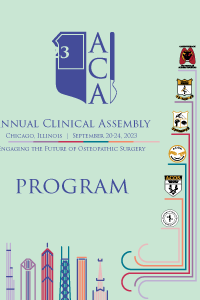Back
Introduction/Purpose: There has been a promising increase in female trainees securing urology residency positions, comprising 30% of positions in 2020. Less promising is a concerning upward trend in burnout reported by young urologists. There has been evidence to suggest that urology residents are prone to burnout, however there is a paucity of data analyzing differences in burnout-related variables among urology residents of different genders. The objective of this study was to determine whether a gender disparity existed in rate of burnout between male and female urological residents.
Methods or Case Description: The 2019 American Urological Association Annual Census data was reviewed for U.S. urology residents’ responses to 22-item Maslach Burnout Inventory. This cross-sectional study described the differences in burnout variables between male and female residents. Basic statistics were performed with chi-square test and t-test analysis for categorical and continuous variables, respectively. Univariate and multivariate logistic regression was performed to identify covariates contributing to burnout in each gender. Statistical significance was accepted at 0.05.
Outcomes: A total of 512 resident respondents were included in the study, 360 (70.3%) of which identified as male and 152 (29.7%) as female. The overall rate of burnout was reported for 222 (43.4%) respondents. There was no significance in burnout between male and female (42.2% vs. 46.1%). Males were more likely to consider compensation (p=0.039) and malpractice climate (p=0.009) when considering practice setting compared to female residents. When identifying important factors that would improve their overall well-being and work-life balance, male respondents were more likely to consider resident retreat (p=0.034) while female respondents considered Uber/taxi services after call (p=0.026) as more important.
Conclusion: Rates of burnout were similar between the two genders. The male respondents were more likely to consider resident retreat compared to dedicated Uber/taxi services after call. Meal plan was the most important factor for both genders.
ACOS 2023 Annual Clinical Assembly
Urological Surgery
Podium Presentations - Urological Surgery
Identifying Gender Disparity for Professional Burnout in Urology Residents
Thursday, September 21, 2023
3:40 PM – 3:50 PM CT
Location: Avenue Ballroom, 4th Floor

Kimberly C. Lince, M.S., Student Doctor (she/her/hers)
Student Doctor
University of the Incarnate WordDisclosure(s): No financial relationships to disclose
Presenter(s)
Disclosure(s):
Kimberly C. Lince, M.S., Student Doctor: No financial relationships to disclose
Learning Objectives:
- Upon completion, participant will be able to identify if there is a gender disparity for professional burnout in urology residents.
- Upon completion, participant will be able to identify barriers contributing to professional burnout in urology residents.
- Upon completion, participant will be able to compare how barriers contributing to professional burnout in urology residents differ between male and female genders.
Methods or Case Description: The 2019 American Urological Association Annual Census data was reviewed for U.S. urology residents’ responses to 22-item Maslach Burnout Inventory. This cross-sectional study described the differences in burnout variables between male and female residents. Basic statistics were performed with chi-square test and t-test analysis for categorical and continuous variables, respectively. Univariate and multivariate logistic regression was performed to identify covariates contributing to burnout in each gender. Statistical significance was accepted at 0.05.
Outcomes: A total of 512 resident respondents were included in the study, 360 (70.3%) of which identified as male and 152 (29.7%) as female. The overall rate of burnout was reported for 222 (43.4%) respondents. There was no significance in burnout between male and female (42.2% vs. 46.1%). Males were more likely to consider compensation (p=0.039) and malpractice climate (p=0.009) when considering practice setting compared to female residents. When identifying important factors that would improve their overall well-being and work-life balance, male respondents were more likely to consider resident retreat (p=0.034) while female respondents considered Uber/taxi services after call (p=0.026) as more important.
Conclusion: Rates of burnout were similar between the two genders. The male respondents were more likely to consider resident retreat compared to dedicated Uber/taxi services after call. Meal plan was the most important factor for both genders.

